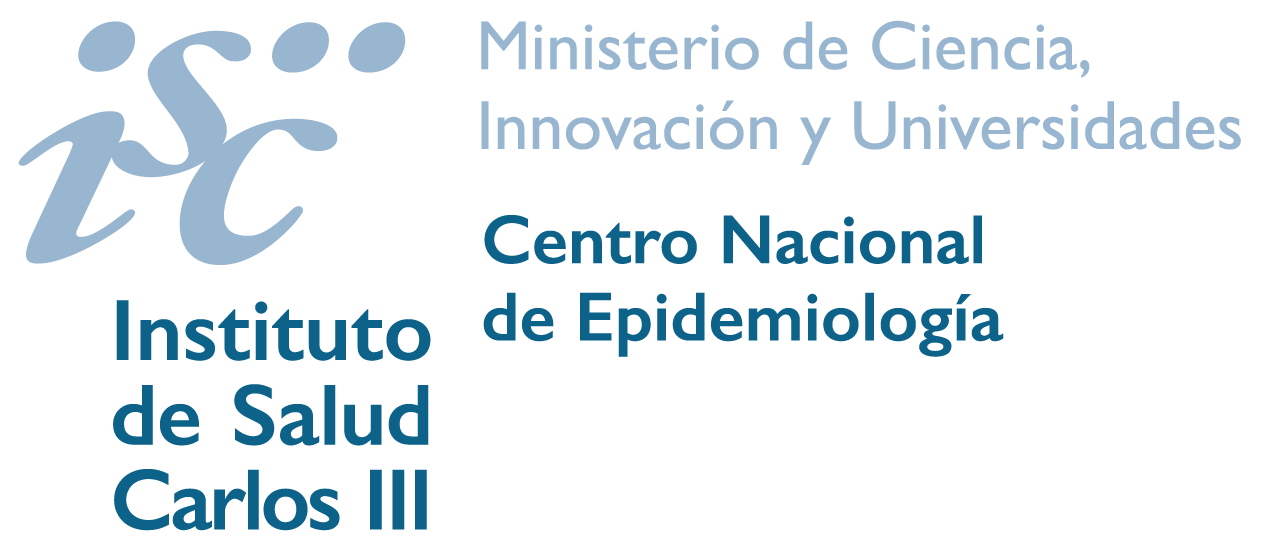Invasive pneumococcal disease in Spain. Period 2015-2021
Keywords:
Invasive pneumococcal disease; IPD; Pneumococcal vaccines; Spain; Epidemiological analysis; RENAVEAbstract
Introduction: Invasive pneumococcal disease (IPD) is a disease caused by the bacterium Streptococcus pneumoniae. The aim of this study was to analyze information on IPD in Spain during the period 2015-2021.
Method: Descriptive epidemiological analysis of cases of IPD reported to the National Epidemiological Surveillance Network. The variables analyzed were: sex, age, date of symptom onset, place of residence, death and serotype of the pathogen.
Results: 19,720 cases of ENI were reported, 58.8% were men. The incidence rate (IR) during the period was increasing, stabilizing in 2019 and decreasing in the pandemic years (2020 and 2021). The cumulative incidence rate for the period (CI) was 6.89 per 100,000 population. The highest IRs were observed in children under 5 years of age (especially in children under 1 year of age (CI of 21.4) followed by the 65 and over age group (CI of 18.1). The highest case fatality rate was in the group aged ≥65 years (case fatality rate of 21.63). Serotypes 8 (20.5%) and 3 (14%) were the majority, constituting 34.5% of cases.
Conclusions: Containment measures during the pandemic had an effect in reducing the number of cases of ENI. In 2021, IRs were similar to those of 2020 except in children under 5 years (especially in children under 1 year with a IR of 22.9). Due to differences in the lethality of different serotypes it is important to report deaths and investigate the serotype that caused the disease.
Downloads
References
Kwun MJ, Ion AV, Cheng HC, et al. Post-vaccine epidemiology of serotype 3 pneumococci identifies transformation inhibition through prophage-driven alteration of a non-coding RNA. Genome Med. 2022;14(1):144. Published 2022 Dec 20. doi:10.1186/s13073-022-01147-2
Centro Nacional de Epidemiología. instituto Salud Carlos III. Protocolo de vigilancia de enfermedad neumocócica invasora (ENI). Disponible en: https://www.isciii.es/QueHacemos/Servicios/VigilanciaSaludPublicaRENAVE/EnfermedadesTransmisibles/Documents/archivos%20A-Z/Enfermedad_Neumo_Invasora/Protocolo%20de%20Vigilancia%20de%20Enfermedad%20Neumoc%C3%B3cica%20Invasora%20(ENI).pdf [consultado el 24 de enero de 2023]
Agencia Española del Medicamento y Productos Sanitarios (AEMPS). Vaxneuvance. Ficha técnica. Disponible en: https://cima.aemps.es/cima/dochtml/ft/1211591003/FT_1211591003.html[consultado el 12 de enero de 2023].
Agencia Española del Medicamento y Productos Sanitarios (AEMPS) Apexxnar. Ficha técnica. Disponible en: https://cima.aemps.es/cima/dochtml/ft/1211612002/FT_1211612002.html [consultado el 12 de enero de 2023].
Brueggemann AB, Rensburg MJ, Shaw D, et al. Changes in the incidence of invasive disease due to Streptococcus pneumoniae, Haemophilus influenzae, and Neisseria meningitidis during the COVID-19 pandemic in 26 countries and territories in the Invasive Respiratory Infection Surveillance Initiative: a prospective analysis of surveillance data. Lancet Digit Health 2021; 3:360–70.
Perniciaro S, van der Linden M, Weinberger DM. Reemergence of Invasive Pneumococcal Disease in Germany During the Spring and Summer of 2021. Clin Infect Dis. 2022;75(7):1149-1153. doi:10.1093/cid/ciac100
Bertran M, Amin-Chowdhury Z, Sheppard CL, et al. Increased Incidence of Invasive Pneumococcal Disease among Children after COVID-19 Pandemic, England. Emerg Infect Dis. 2022;28(8):1669-1672. doi:10.3201/eid2808.220304
Health Protection Surveillance Centre (Ireland).Typing & Antimicrobial Susceptibilities of isolates causing Invasive Pneumococcal Disease (IPD) in Ireland – Results from 2019-2021. Disponible en: https://www.hpsc.ie/a-z/vaccinepreventable/pneumococcaldisease/epidemiologicaldata/annualreportsoninvasivepneumococcaldisease/Irish%20IPD%20Report%202019-2021.May2022.pdf [consultado el 16 de enero de 2023]
European Centre for Disease Prevention and Control (ECDC), 2019. Invasive pneumococcal disease. Annual Epidemiological Report for 2017. Disponible en: https://www.ecdc.europa.eu/sites/default/files/documents/AER_for_2017-invasive-pneumococcal-disease.pdf[consultado el 19 de enero de 2023]
Ministerio de Sanidad. SIVAMIN, Sistema de Información de Vacunaciones del Ministerio de Sanidad. Disponible en: https://pestadistico.inteligenciadegestion.sanidad.gob.es/publicoSNS/I/sivamin/sivamin
Limia A, Olmedo C, Soler M. Ponencia de Programa y Registro de Vacunaciones y evolución del calendario de vacunación en España. Rev Esp Salud Pública. 2020; 94: 11.
Grupo de trabajo vacunación en población adulta y grupos de riesgo de la Ponencia de Programa y Registro de Vacunaciones. Vacunación en grupos de riesgo de todas las edades y en determinadas situaciones. Comisión de Salud Pública del Consejo Interterritorial del Sistema Nacional de Salud. Ministerio de Sanidad, Consumo y Bienestar Social, julio 2018.
Linley E, Bell A, Gritzfeld JF, Borrow R. Should Pneumococcal Serotype 3 Be Included in Serotype-Specific Immunoassays?. Vaccines (Basel). 2019;7(1):4. doi:10.3390/vaccines7010004.
Sings HL, Gessner BD, Wasserman MD, et al. Pneumococcal Conjugate Vaccine Impact on Serotype 3: A Review of Surveillance Data. Infect Dis Ther. 2021 Mar;10:521-539.
Janssens E, Flamaing J, Vandermeulen C, et al. The 20-valent pneumococcal conjugate vaccine (PCV20): expected added value. Acta Clin Belg. 2023;78:78-86.
De Miguel S, Latasa P, Yuste J, et al. Age-Dependent Serotype-Associated Case-Fatality Rate in Invasive Pneumococcal Disease in the Autonomous community of Madrid between 2007 and 2020. Microorganisms 2021; 9; 2286 https://www.ecdc.europa.eu/sites/default/files/documents/botulism-annual-epidemiological-report-2020.pdf.
Downloads
Published
How to Cite
Issue
Section
License
Copyright (c) 2023 Marta Soler Soneira, María Sastre-García, Rocío Amillategui-Dos-Santos, Noemí López-Peréa, Josefa Masa-Calles, Rosa Cano Portero

This work is licensed under a Creative Commons Attribution-NonCommercial-ShareAlike 4.0 International License.
El material creado por un autor puede ser distribuido, copiado y exhibido por terceros si se hace referencia a la autoría. No se puede obtener ningún beneficio comercial y las obras derivadas tienen que estar bajo los mismos términos de licencia que el trabajo original



